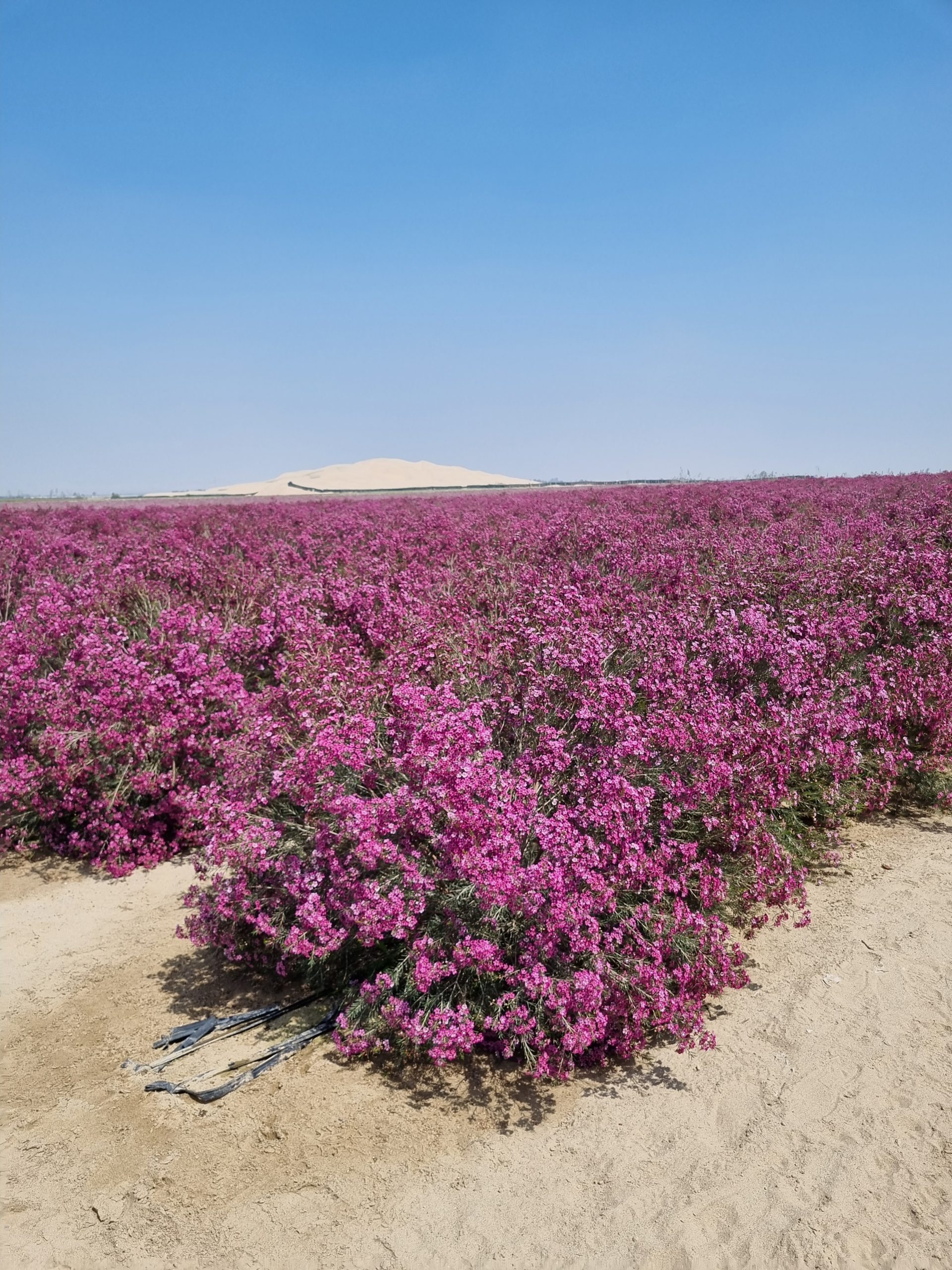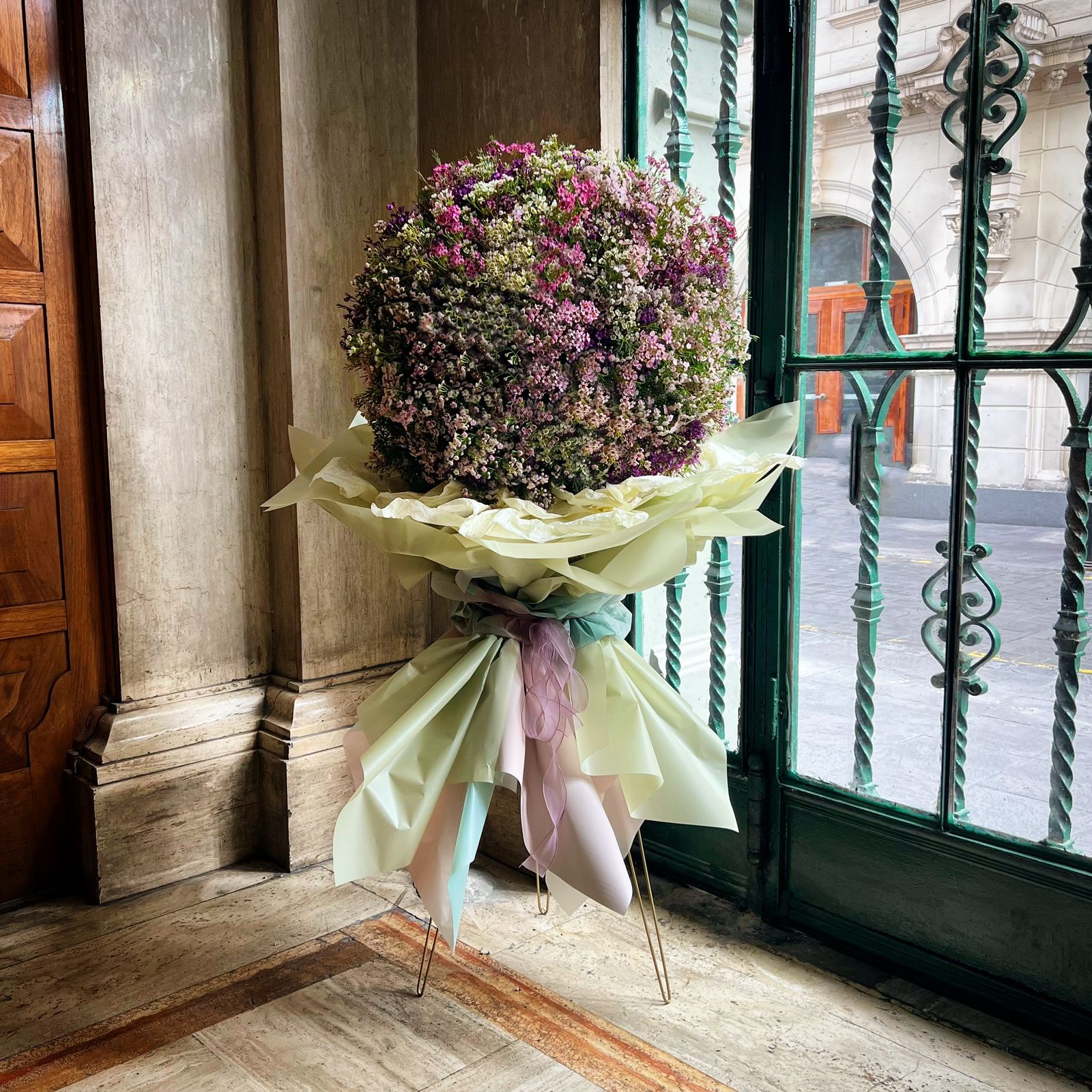“Wax flowers are being widely used because of their versatility: they can be dyed any color…”
Jorge Sotomayor Luque is the commercial manager at Florisert, a Peruvian company specialized in the cultivation of waxflowers. Sotomayor has a degree in administration from Universidad Ricardo Palma, and an M.Sc in marketing and commercial management from Escuela de Organización Industrial.

Jorge Luque, commercial manager at Florisert
AgriBrasilis – What are waxflowers?
Jorge Sotomayor – Waxflowers come from plants of the Chamelaucium genus, evergreen shrubs that reach between two and three meters in height. The leaves of these plants have a citrus scent, while the flowers have very resistant petals, and can last around 15 days in a vase, if the necessary care is taken.
The wax flower is considered a perennial crop, because it lasts an average of 12 to 14 years. Its season in Peru takes place between the months of April and October. It is a desert crop, native to Australia, and therefore needs heat during the day and cold at night, with a daily temperature variation of 10 degrees Celsius.
AgriBrasilis – What is the market for this flower in Peru and Latin America?
Jorge Sotomayor – In the case of Latin America, the protocol for the entry of waxflowers into Colombia was enabled in 2022, and in 2023 the entry into Brazil was approved. That is why we are working hard with the commercial, quality, and planning teams in these countries, to help them discover the versatility of waxflowers.

Source: Florisert
Due to a corporate decision, Florisert has no longer sold on the local market for many years. However, in 2023 we had meetings with the main chain of flower stores in Peru and carried out some market tests, which are giving good results. Therefore, in the coming weeks we must review our plans for 2024.
AgriBrasilis – What makes this flower species different?
Jorge Sotomayor – The waxflower is generally considered a “filler”, to add volume to bouquets, but in recent years we have worked a lot with designers, trying to show that it can work very well as a main flower in a bouquet. That is why today there are ready-made bouquets of waxflowers sold in supermarkets in the USA and Europe.
Waxflowers are being widely used because of their versatility: they can be dyed any color, using their natural bases such as white, pink, and purple. Our dyeing process, for example, is done by absorption. In order to do this, we generate water stress in the stems, so that they can quickly absorb the dyes, and then we stabilize them with water.
Waxflowers have a very pleasant citrus aroma, which is not the case with other flowers that are used as “fillers” for bouquets. Furthermore, its high durability is a very positive factor.
The final price of this product will depend on the intended market, duration, seasonality, whether the product is sold based on weight, as a finished bouquet, as part of an arrangement of bouquets, etc.
AgriBrasilis – How are the export negotiations with Brazil and Colombia going?
Jorge Sotomayor – We already export to Colombia, and our product is being used in bouquet arrangements that are destined for US supermarkets. We also received commercialization proposals in the local market of Bogotá and Medellín, Colombia.
With Brazil, we have made great progress thanks to the support of the Brazilian Embassy in Peru and the PromPerú Commercial office in Brazil. We carry out prospecting trips to understand the Brazilian market, we visit fairs and several companies in the sector.
So far, we have received many proposals for the introduction of waxflowers in Brazil in 2024. During 2023, many quality tests, shelf-life tests in pots, etc., were carried out.
Florisert is located in the Pampas de Villacurí in Ica, Peru. We currently have 80 hectares of waxflowers in full production, and we still have another 50 hectares suitable for planting
We specialize in the production of waxflowers. We have imported varieties as well as hybrids, which are the results of open pollination.

Source: Florisert
AgriBrasilis – Could you comment on the flower market in Peru?
Jorge Sotomayor – In 2022, US$ 13 million in Peruvian flowers were exported, from the regions of Ica, Junín, Ancash, Cajarmarca, Arequipa, among others.
Flower exports in recent years
YEAR |
US$ |
KG |
2017 |
8,845,429 |
1,625,709 |
2018 |
9,137,923 |
1,709,468 |
2019 |
10,044,204 |
1,768,230 |
2020 |
8,954,455 |
1,335,468 |
2021 |
12,395,018 |
1,648,723 |
2022 |
13,016,272 |
1,597,562 |
There are around 35 flower exporters in Peru and Florisert is the second company in this ranking. Our result was obtained only with exports of waxflowers.
The opening of new markets, such as Colombia and Brazil, will allow fo an exponential growth, given that Colombia is the second largest exporter of flowers in the world and does not have waxflower crops. This flower is highly sought after in the North American market, which is why Colombia needs to include it in the arrangements of bouquets that are exported to the USA. On the other hand, the high consumption of flowers in Brazil, which is unable to be self-sufficient in this regard, is a great opportunity for Peruvian floriculture. Furthermore, it is expected that Ecuador will approve the phytosanitary protocol for the import of waxflowers in 2023.
Without a doubt, the floriculture sector has experienced an increase in consumption. Previously, a large part of sales were destined for importers and wholesalers who purchased our product by weight, but the dynamism of the market has led our customers to fulfill orders from supermarkets and the online channel, for example. Therefore, we adapt to market demands and currently have several presentations, ranging from stems per bunch to bouquets with different weights.

Source: Florisert
READ MORE:

